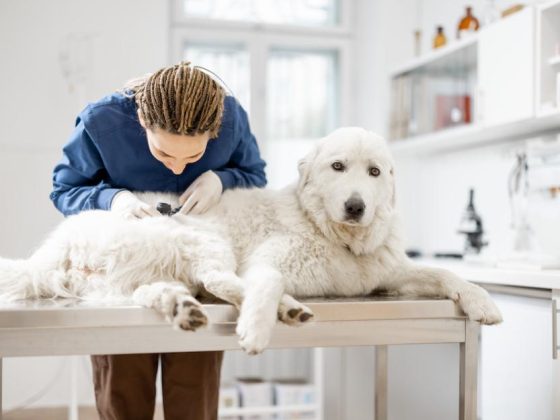As a dog owner, you may often find yourself wondering about your pet’s health, given their inability to communicate their feelings or early symptoms of any ailment. Nevertheless, there are several signs and methods to understand your dog’s health condition.
Regular vet visits and routine checkups are crucial for maintaining your dog’s health and wellbeing. In addition, there are certain signs that you can observe to determine your dog’s health.
Clear and Odorless Ears
Healthy dog ears should be free from dirt, excessive earwax, discharge, and strong odors. Although it’s normal for your dog’s ears to get dirty during outdoor play, a regular cleaning routine is necessary to prevent ear infections. Pay attention to any signs of swelling or foul odors and consult a vet if you suspect any issues.
Steady Body Weight
Obesity is a prevalent health issue in dogs that can lead to diabetes, heart disease, various types of cancer, and more. For this reason, a healthy dog should maintain a stable body weight. It’s essential to provide a balanced diet from the beginning and control portion sizes.
If you observe any sudden weight gain or loss, consult your vet to devise an ideal meal plan for your dog. If your dog is eating adequately and maintaining a consistent weight, it’s a good sign of their health.
Fresh Breath
A healthy mouth, breath, and teeth without plaque or tartar buildup indicate good health. Their gums should be pink and odorless. Dogs can also suffer from dental diseases like gingivitis, periodontitis, and tooth decay, which can affect their overall health and lead to bad breath and oral melanoma. Regular dental care and checkups can help improve their health and detect any health problems early.
Regular Urination and Defecation
Observing your dog’s urine and feces can give you a lot of insight into their health and help you take early precautions. A healthy dog will not have worms, eggs, diarrhea, mucus, blood, tarry appearance, or a black or greasy coating in its stool.
Healthy urine color ranges from amber, straw yellow, pale gold, to clear yellow. However, if you notice any changes in their urine or feces, it could indicate a viral infection, stress, allergies, or dietary issues. In such cases, take them for a checkup.
Glossy Coat
A healthy dog’s coat should be shiny and glossy, with natural oils maintaining its sheen and loose hair. Dogs don’t require daily baths unless they get dirty. The frequency of baths should be based on their fur type, as every dog’s grooming process differs.
If your dog constantly scratches, licks, or chews their skin, it could indicate skin allergies, irritation, a bug bite, or fleas. These signs suggest discomfort and require treatment.
Active Engagement
A dog’s health isn’t just about physical wellbeing but also mental health. While physical illness can be seen, mental illness can be harder to identify. If your dog seems happy and excited during family activities, training, or playtime, they’re likely content and happy.
Conversely, sudden distancing, loss of interest, or inactivity could indicate depression, anxiety, or sickness. Therefore, it’s important to observe their behavior closely.












